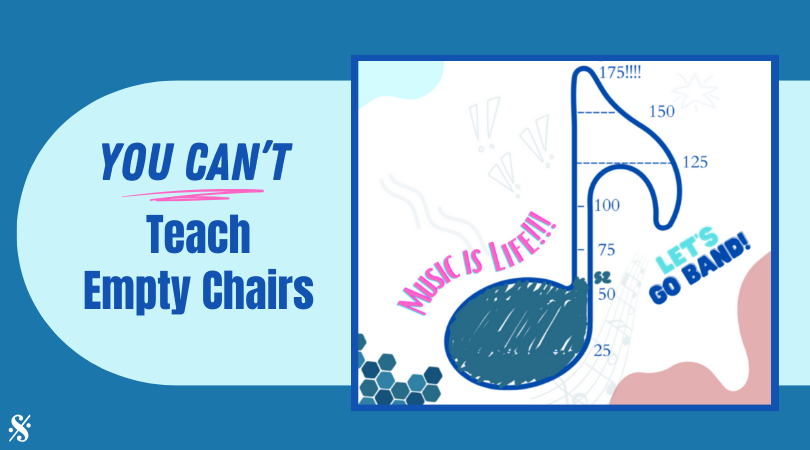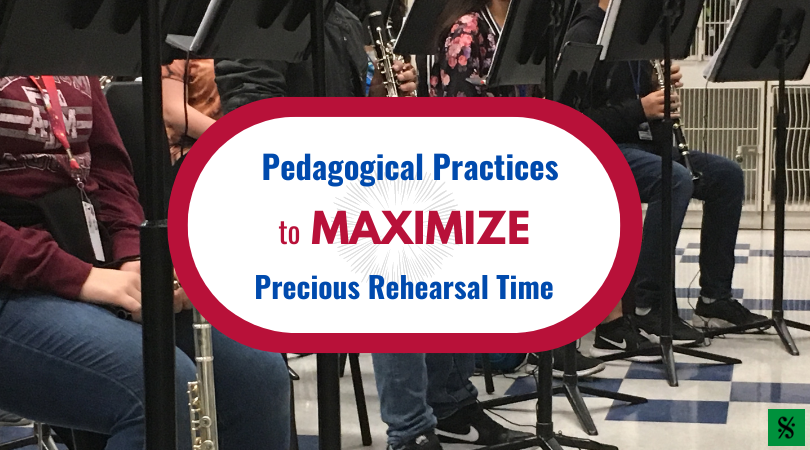You turn to the flute player who has the solo and reminder her to play soloistically, dolce. She looks at you and asks, “So I play softer?” You coach the ensemble to follow their part and play that passage brillante and they just play louder. Seem familiar? While we may have an idea of what we want, we may not know how to communicate it. The terms brillante and dolce are thrown around and while we have definitions for them, we generally do not know what these terms sound like. Terms like this are key to understanding rhythmic musicality.

Let’s look at the definitions of these two words: Brillante – bright, sparkling; Dolce – sweetly, with tender emotion. This doesn’t give us much to go on much less how do you describe sweetly to a teenager? To get a better idea of how to use the terms, we have to understand how a singer would interpret them.
One of the greatest tools that a singer has is rhythmic interpretation. How they sing the rhythm can convey a wide range of emotion. For example, if they want to portray tenderness they would stretch out the rhythm slightly, treating it with gentleness. If a singer wants to portray excitement they can slightly speed up the rhythms, giving it an energetic feeling.
There are three ways of interpreting music with musicality:
- Melodically
- Harmonically
- Rhythmically
Soloistic playing falls under the Rhythmic category.
The rhythmic style of playing musically deals with the parts of the beat. While we do not think of it, there are three parts to any beat: front, middle, and back. The back part is synonymous with jazz but classical musicians utilize beat placement also, often unknowingly.
There are a couple of experiences that I had which helped in discovering this style of beat interpretation. The first came to me when I was working on my masters. One day in one of my applied lessons my teacher decided to play along with me during some scalar-type passages. As we were playing it became apparent that we were not together. He accused me of dragging and being spunky, I said he was rushing (this was all in good nature). To solve our “challenges” we put it to a metronome. He went first, and of course he was with the metronome. I then went and was also with the metronome. We tried it together again, this time with the metronome. While with the metronome, we were still not together.
As we analyzed our playing we realized that he was playing on the front part of the beat and I was playing in the middle of the beat. Trained as an orchestral clarinetist, my teacher (unknowingly) played on the front part of the beat to give his playing more “vibrance.” One of the side effects of this is that it can sound/feel like the player is rushing even though they are on the beat. Coming from mainly the band world, I was trained in the middle of the beat which overall seems to have more stability with the beat. I also play jazz so I was quite familiar with the back part of the beat but never considered it in the classical sense.
The second turning point for me was an article by David Etheridge in The Instrumentalist in which he gave an interpretation on how to play the Mozart’s Clarinet Concerto. Etheridge had gone through and evaluated several significant recordings of the piece, then presented the summation of all of them in the article. I went and listened to some the recordings that he used, and with the knowledge of the parts of the beat from the fore mentioned lesson, I started to have a better understanding of the terms brillante and dolce and how to incorporate them in my playing.
You generally find brillante in passages with fast rhythms (i.e. sixteenths). By moving to the front part of the beat during this section, these notes seem to have “life” to them in contrast to the rest. Dolce is generally found in slower rhythms (i.e. eighths and quarters). Shifting to the back part of the beat gives these notes a slight emphasis, bringing them out a bit. One can shift back and forth through both of these quite effectively. It is this changing their placement in the beat that soloist use to make their passages stand out. Constant changing placement in the beat would give the impression of lack of steady tempo, but selective use yields amazing results.

This awareness of placement in the beat can be useful in more than just solos. Certain styles of music can be brought alive with this knowledge. Most are familiar with playing on the back part as part of creating swing for jazz. Many rock songs used as “stand” songs need to be played on the front part of the beat, especially the bass lines (This will also keep the lines from slowing down which is a tendency when playing a repetitive part). This will give it a sense of excitement that is often missing when heard in the stands.
Practical Application Exercise:
Rhythms are often isolated and practiced, especially in preparation for sight-reading, but awareness of where in the beat is neglected. We can develop this awareness by practicing it with our bands, full ensemble and in sectionals. Warming up is a great time to work on this. Go through a scale and have the group first play in the center several times for them to get a sense of what it sounds and feels like. Then, have then play the same scale on the front part. Their first inclination is to rush but once they can control it they will notice how it brings excitement, or brillante, to the scale. Next, do the same with the back part. Again, once controlled the players will notice a sweetness, or dolce, to the scale even though it is the same tempo.
Eric Ruyle earned a bachelors in Jazz Studies from McNeese State University, received a Masters from Youngstown State University in Woodwind Specialist, and did graduate work in Ethnomusicology at Kent State. He has performed in Mexico, Canada, Europe, and throughout the United States. A top call, Eric has worked with a wide variety of internationally known artists. His articles have been in such national journals as Instrumentalist and Flute Talk. While teaching for over twenty years, he has been with Lonestar College System since 2005.
Related Reading:
Teach Style First
What’s Your Breathing Plan?
“Out of the Box” Rhythm Exercises
If you would like to receive our weekly newsletter, sign up here.
Don’t forget to like us on Facebook too!
Learn. Share. Inspire.
BandDirectorsTalkShop.com






Leave a Reply
You must be logged in to post a comment.